
Concept explainers
To graph: The
Explanation of Solution
Given information:
The quadratic equation
Graph:
The graph of the quadratic equation
Consider the quadratic equation,
Now put the values of
Substitute the value of
Substitute the value of
Substitute the value of
Observe that as the value of
Steps to plot the graph of the equation
Step 1: Press
Step 2: Use the down arrow key to reach
Step 3: Press
Step 4: Press
Step 5: Enter the function
Step 6: Press
For better view of graph.
Step 8: Press
The result obtained on the screen is provided below,
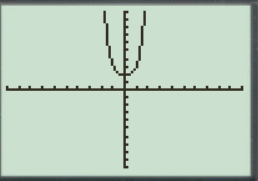
Interpretation:
The equation of the function
The parabola opens upward.
The
Recall that the graphical approach to solve the equation simultaneously is observe the point where the graph of equation
Therefore, in the equation,
Therefore, the equation
When the
- their graph obtained in the screen is provided below.
Steps to plot the graph of the equation
Step 1: Press
Step 2: Use the down arrow key to reach
Step 3: Press
Step 4: Press
Step 5: Enter the function
Step 6: Press
For better view of graph.
Step 8: Press
The result obtained on the screen is provided below,
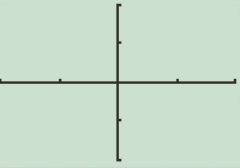
This window is not perfect viewing window.
b.
When the
Steps to plot the graph of the equation
Step 1: Press
Step 2: Use the down arrow key to reach
Step 3: Press
Step 4: Press
Step 5: Enter the function
Step 6: Press
For better view of graph.
Step 8: Press
The result obtained on the screen is provided below,
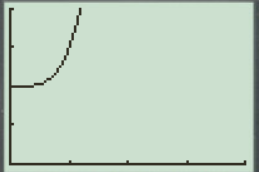
This window is not a perfect viewing window.
c.
When the
Steps to plot the graph of the equation
Step 1: Press
Step 2: Use the down arrow key to reach
Step 3: Press
Step 4: Press
Step 5: Enter the function
Step 6: Press
For better view of graph.
Step 8: Press
The result obtained on the screen is provided below,
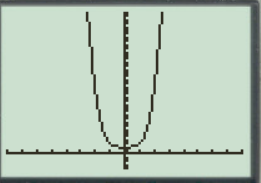
This is the perfect viewing window.
d.
When the
Steps to plot the graph of the equation
Step 1: Press
Step 2: Use the down arrow key to reach
Step 3: Press
Step 4: Press
Step 5: Enter the function
Step 6: Press
For better view of graph.
Step 8: Press
The result obtained on the screen is provided below,
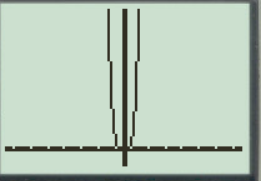
This window has large view, in this the graph points are not clear.
So the perfect viewing window of the graph
Chapter 1 Solutions
EBK PRECALCULUS: MATHEMATICS FOR CALCUL
 Calculus: Early TranscendentalsCalculusISBN:9781285741550Author:James StewartPublisher:Cengage Learning
Calculus: Early TranscendentalsCalculusISBN:9781285741550Author:James StewartPublisher:Cengage Learning Thomas' Calculus (14th Edition)CalculusISBN:9780134438986Author:Joel R. Hass, Christopher E. Heil, Maurice D. WeirPublisher:PEARSON
Thomas' Calculus (14th Edition)CalculusISBN:9780134438986Author:Joel R. Hass, Christopher E. Heil, Maurice D. WeirPublisher:PEARSON Calculus: Early Transcendentals (3rd Edition)CalculusISBN:9780134763644Author:William L. Briggs, Lyle Cochran, Bernard Gillett, Eric SchulzPublisher:PEARSON
Calculus: Early Transcendentals (3rd Edition)CalculusISBN:9780134763644Author:William L. Briggs, Lyle Cochran, Bernard Gillett, Eric SchulzPublisher:PEARSON Calculus: Early TranscendentalsCalculusISBN:9781319050740Author:Jon Rogawski, Colin Adams, Robert FranzosaPublisher:W. H. Freeman
Calculus: Early TranscendentalsCalculusISBN:9781319050740Author:Jon Rogawski, Colin Adams, Robert FranzosaPublisher:W. H. Freeman
 Calculus: Early Transcendental FunctionsCalculusISBN:9781337552516Author:Ron Larson, Bruce H. EdwardsPublisher:Cengage Learning
Calculus: Early Transcendental FunctionsCalculusISBN:9781337552516Author:Ron Larson, Bruce H. EdwardsPublisher:Cengage Learning





